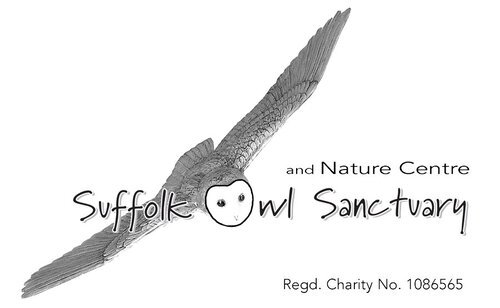The S.O.S. red squirrel colony enjoys luxurious accommodation within the centre’s pretty Woodland Walk.
Three tall, spacious aviaries connected with unique treetop walkways provide the extensive habitat and aerial cover that these solitary animals enjoy: there are plenty of communal areas where family members can congregate but also lots of secluded nooks and crannies in which individuals can enjoy some peace and quiet.
Visitor Christopher Whybroage sent us this image of one of our confident kits taking a closer look at visitors
One measure of the squirrels’ wellbeing, both physical and psychological, is their breeding success. During 2017, there were seven kittens born within the sanctuary’s colony (from two breeding pairs) - an achievement of which we're proud.
There are many reasons for the fragility of red squirrel populations. Firstly, the genus is inherently susceptible to the squirrel pox virus, unlike the more robust grey squirrel with which it must necessarily compete.
Secondly, red squirrels feed less efficiently in the broadland woodlands of their favoured habitat than grey squirrels - the latter can survive at densities of 8 per. hectare, whilst red squirrels are only successful at a density of 1 per. hectare (and as low as 0.1 per. hectare in coniferous woodland).
Red squirrels also suffer at the hands of a number of predators such as birds of prey and pine martens with the breeding patterns of the latter correlating directly with fluctuations in red squirrel numbers.
The modern world also encroaches on red squirrel populations - in some urban areas, domestic cats pose a new threat and throughout all rural areas of the U.K. evidence of the devastation caused to both red and grey squirrel populations by traffic is plain to see on the roads.
There are estimated to be only 140,000 red squirrels in Britain presently, compared to 2.5 million greys, so the necessity of captive breeding programmes has never been more apparent.
One of the mature Red Squirrels at S.O.S. enjoys a snack
Successful progeny from the S.O.S. squirrel colony are usually transferred to other national breeding centres, to introduce new blood lines and improve the gene pool, most notably the Isle of Wight Red Squirrel Trust. The geographical advantages of this small island are particularly conducive to successful breeding with the Solent providing a barrier to the infiltration of grey squirrels.
As it is illegal to introduce a grey squirrel into red squirrel territory with a penalty of two year’s imprisonment or a £5,000 fine, the island offers an insulated, protective environment.
Captive breeding centres are also now established in many parts of the U.K including Surrey, Cornwall, Kent, Brownsea Island, Yorkshire, Jersey and Tresco. The seven most recent Suffolk Owl Sanctuary progeny have just settled into their new home in Hereford, where we hope they will enjoy many years successfully breeding their own young.


